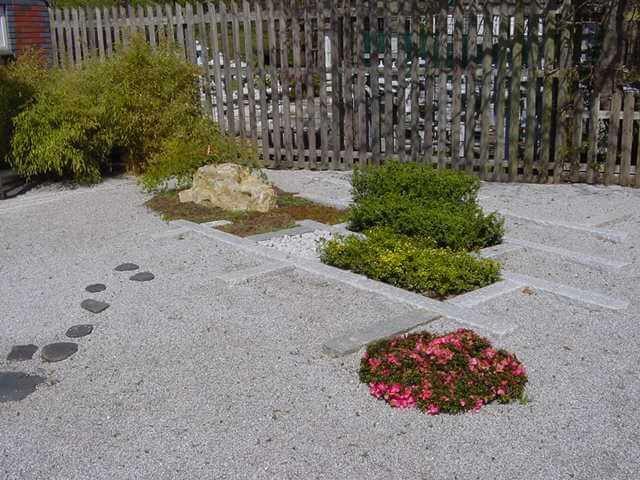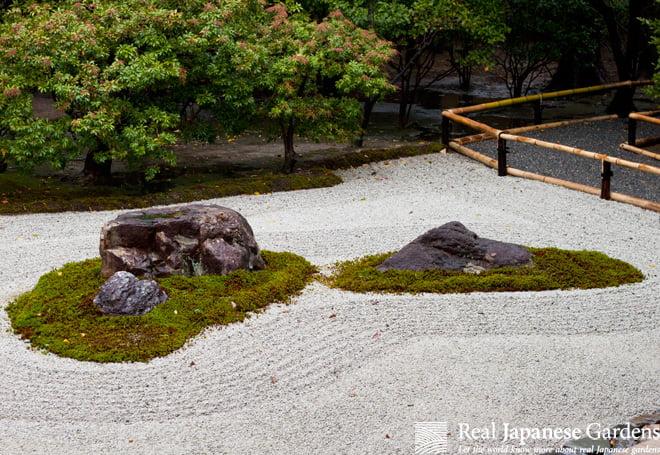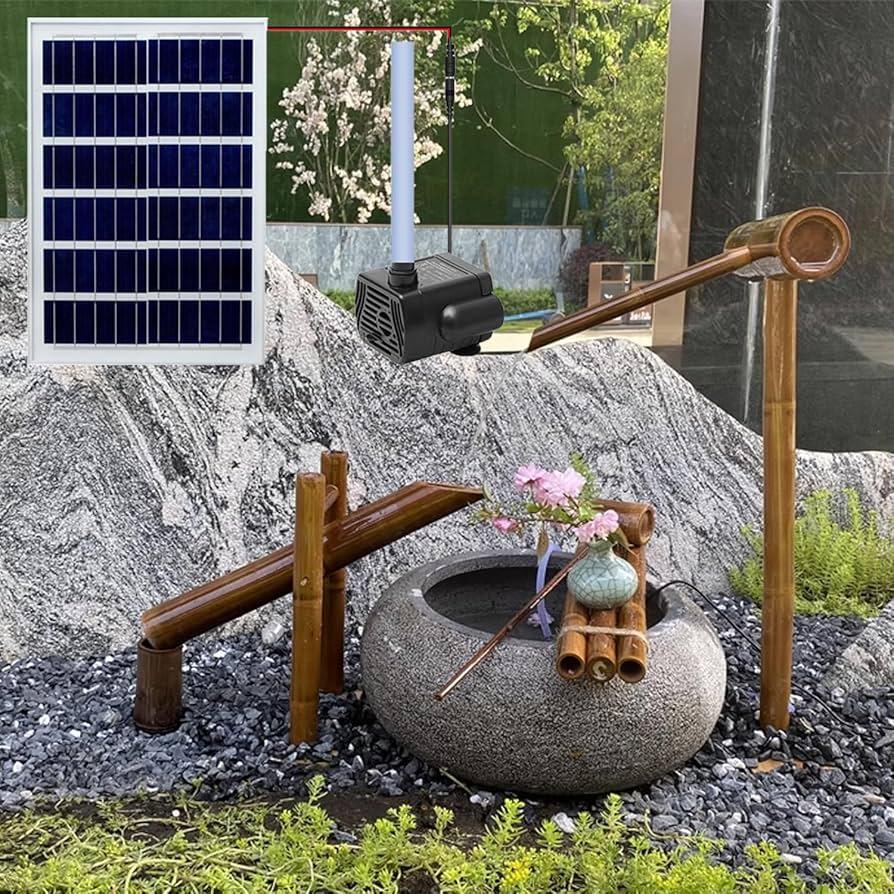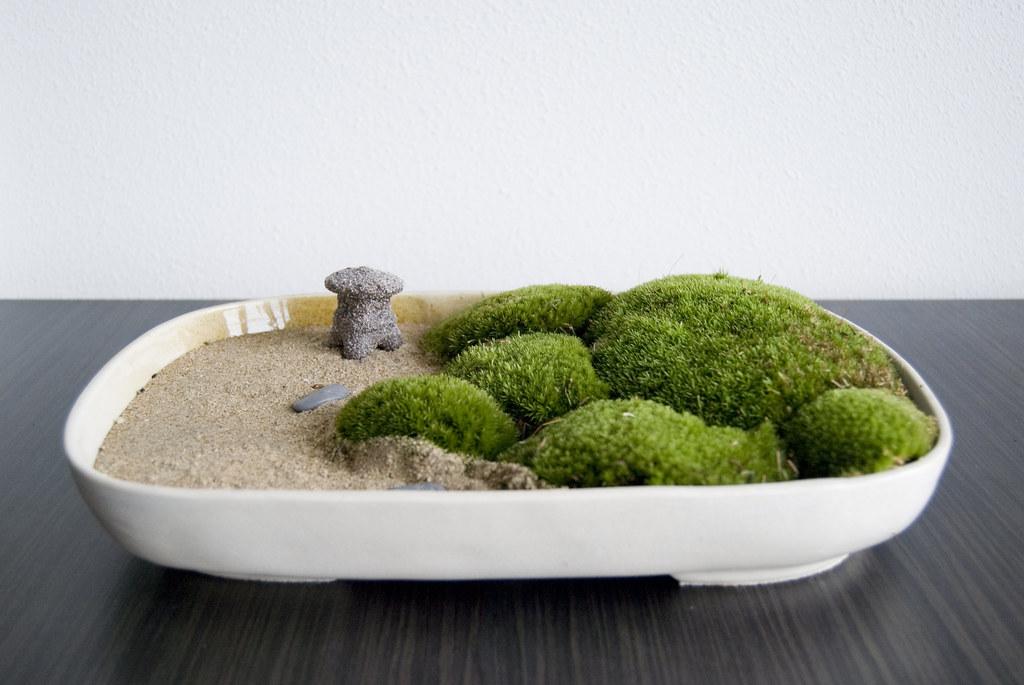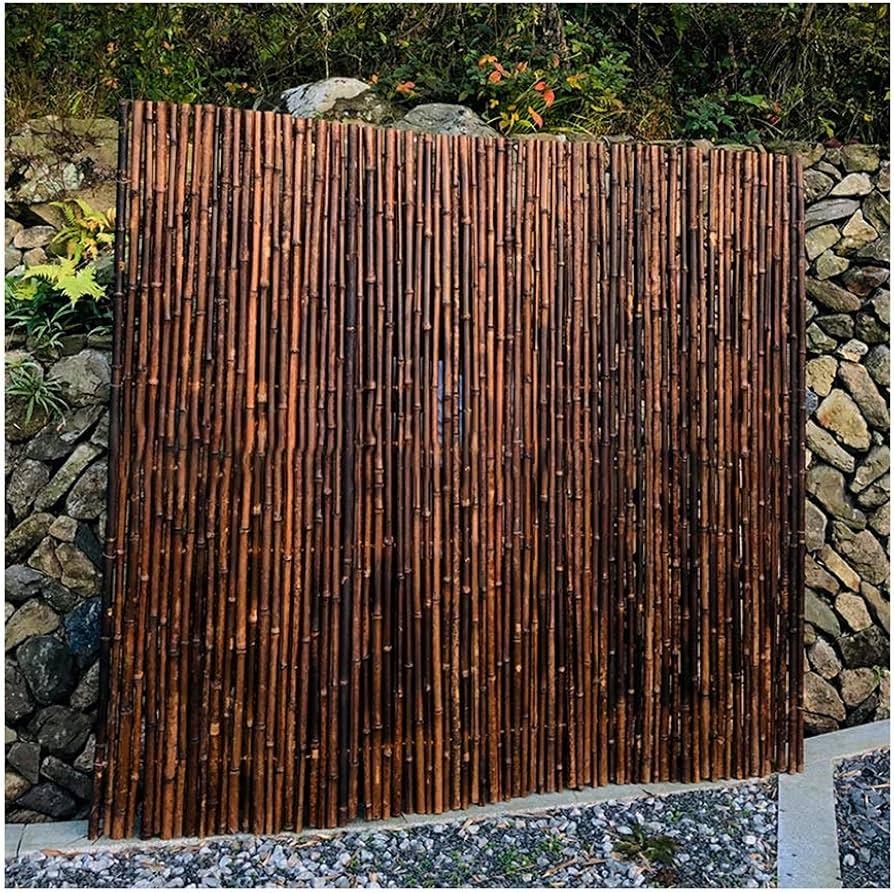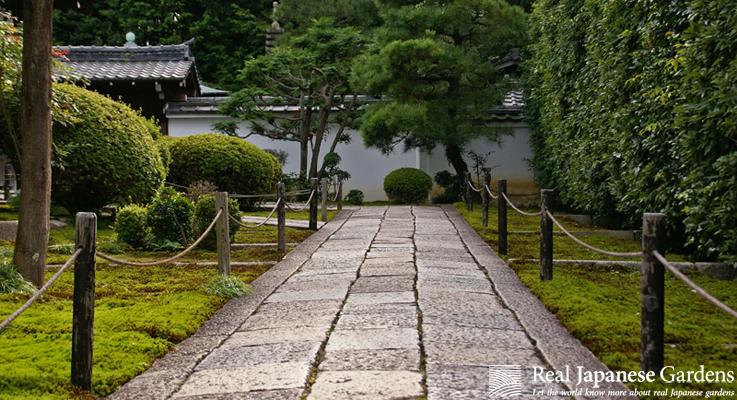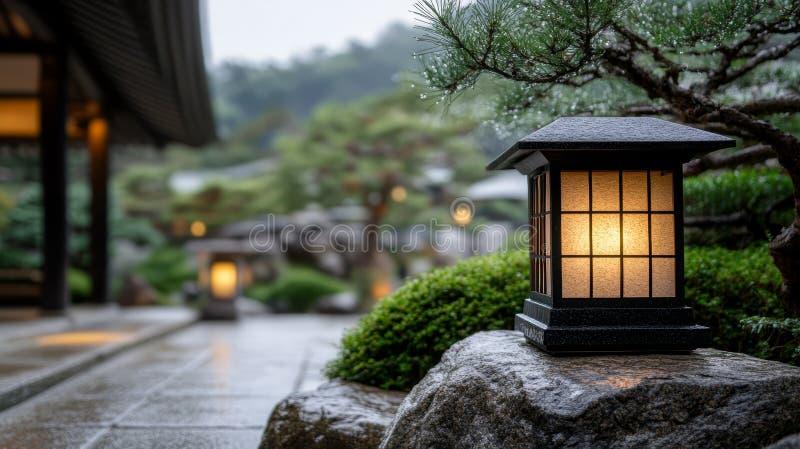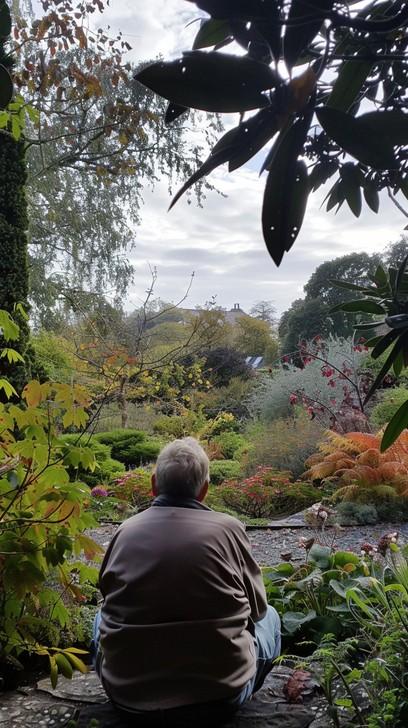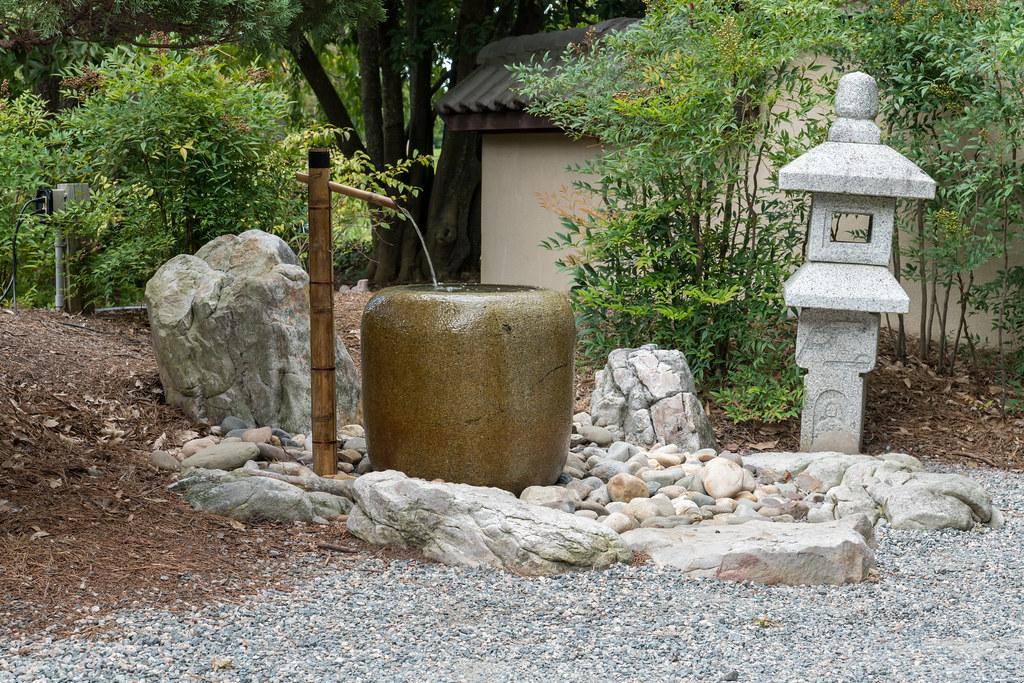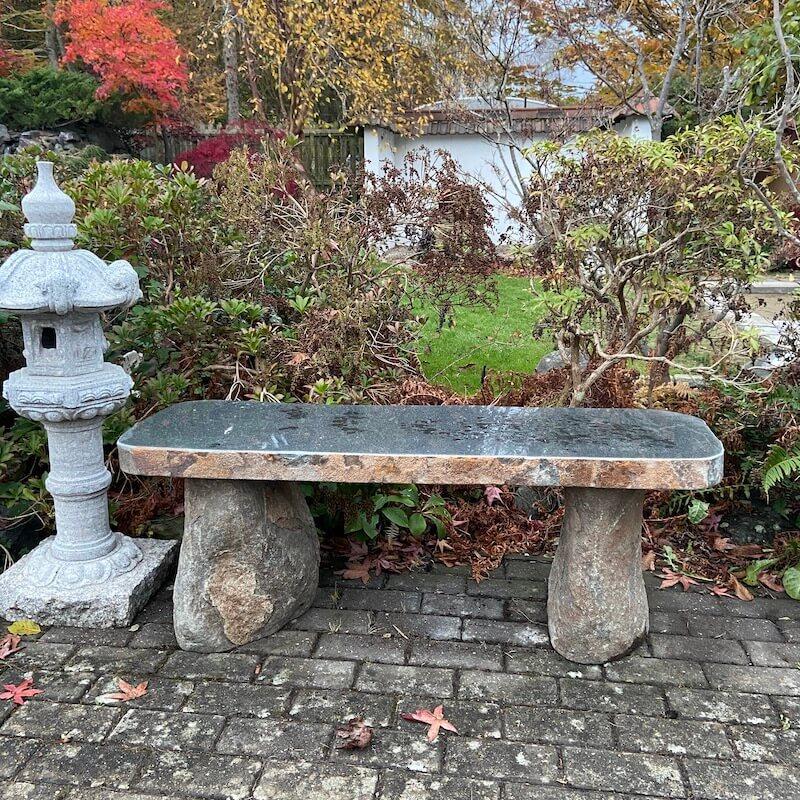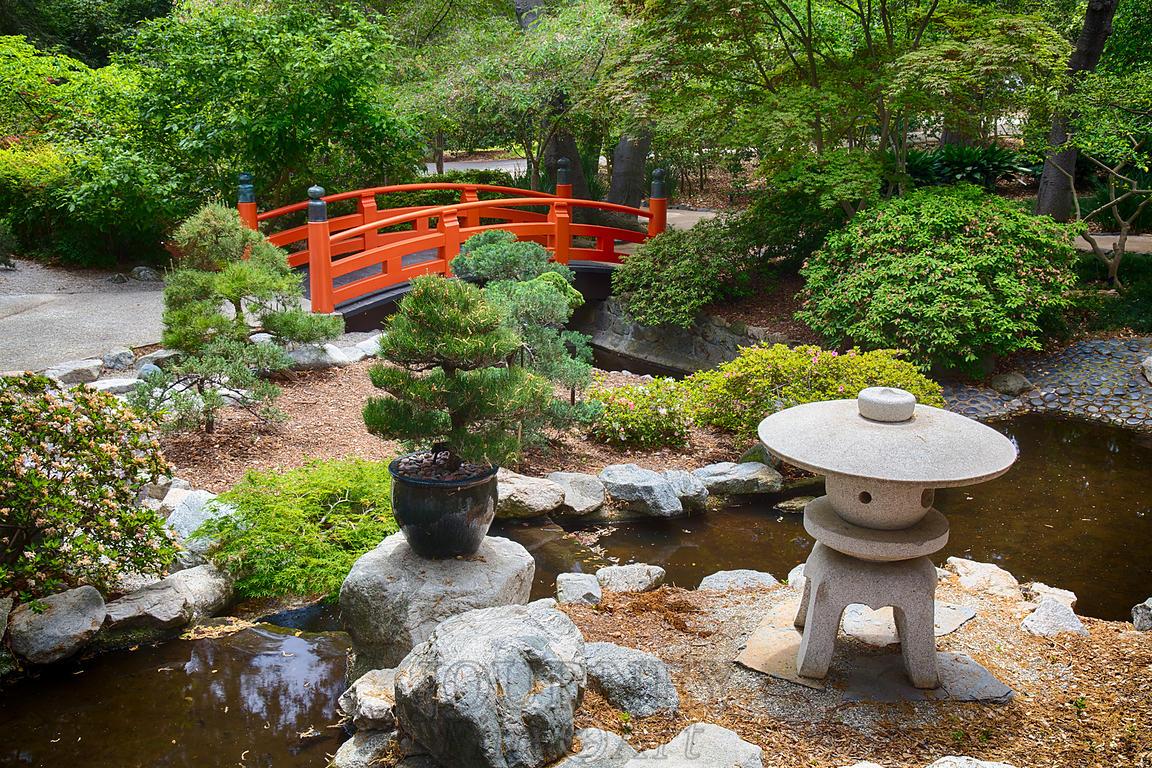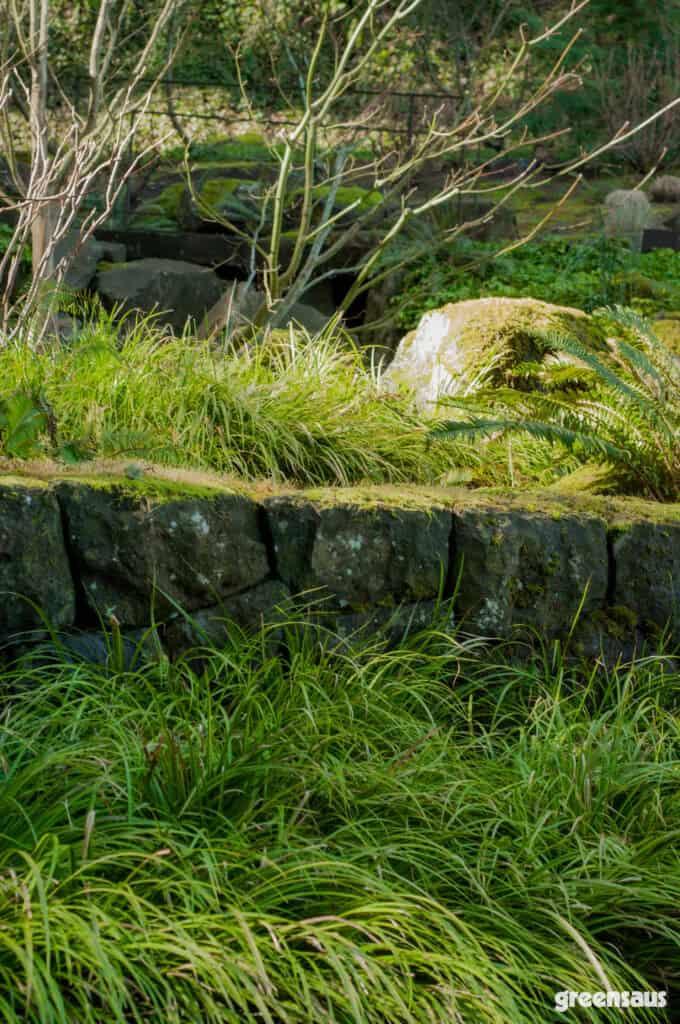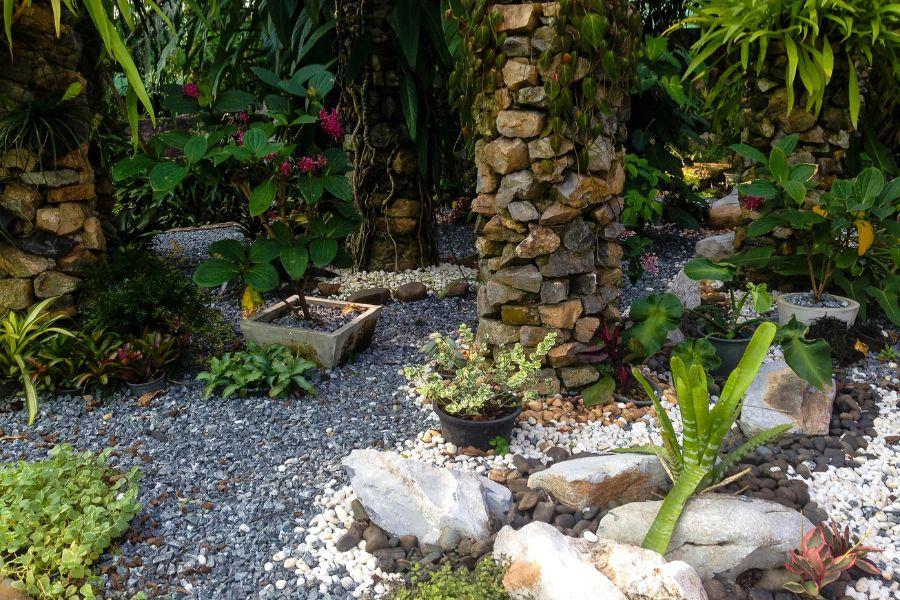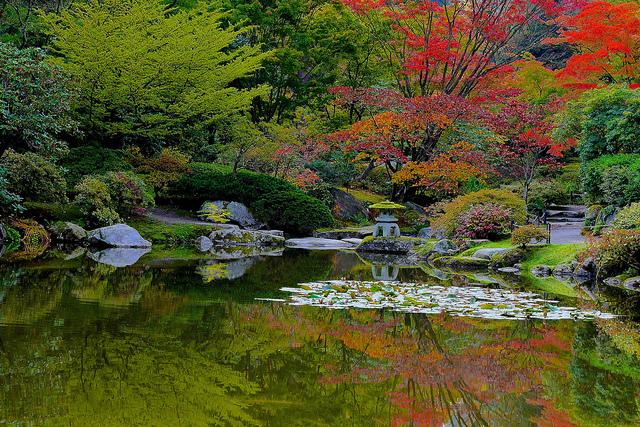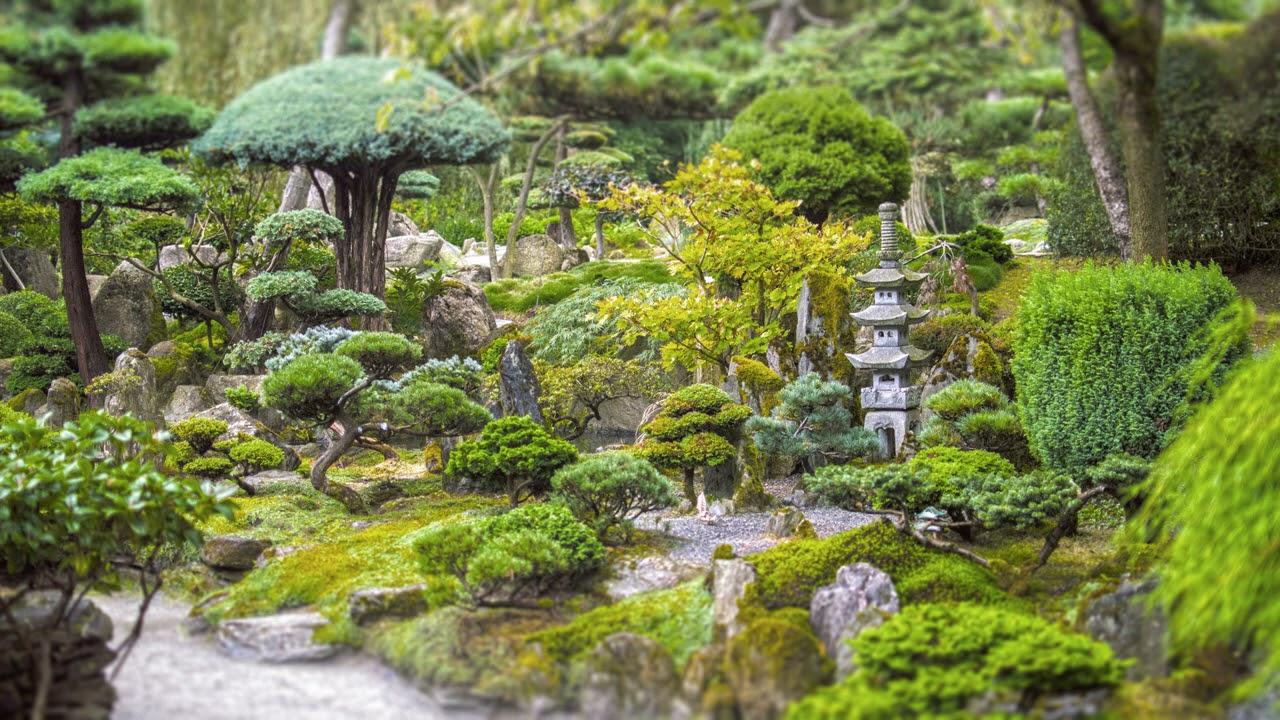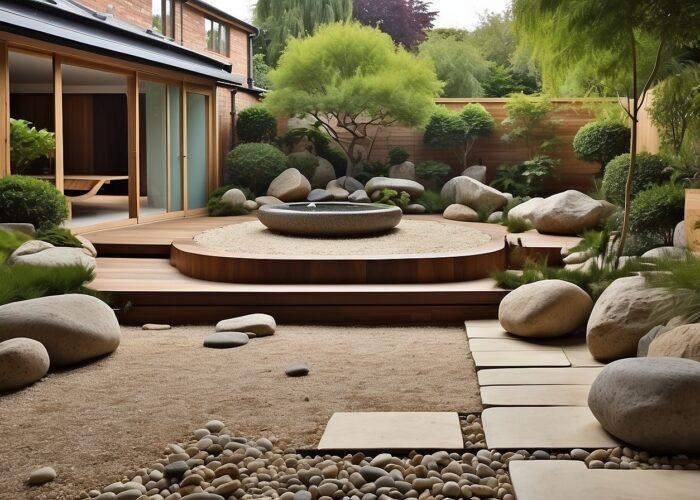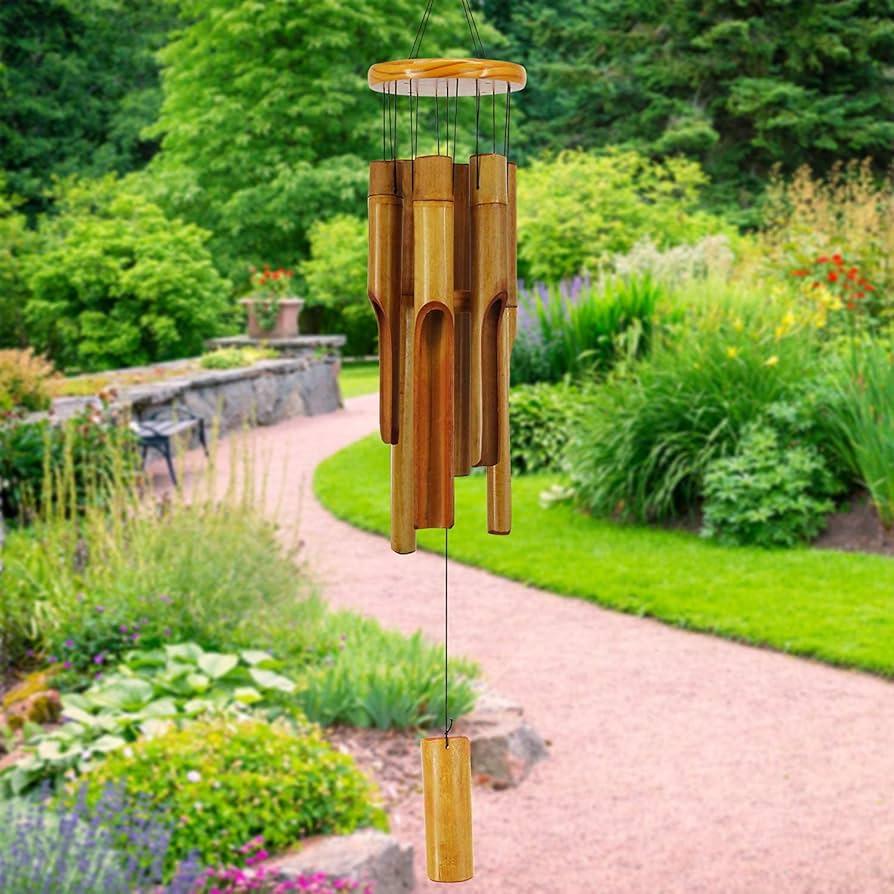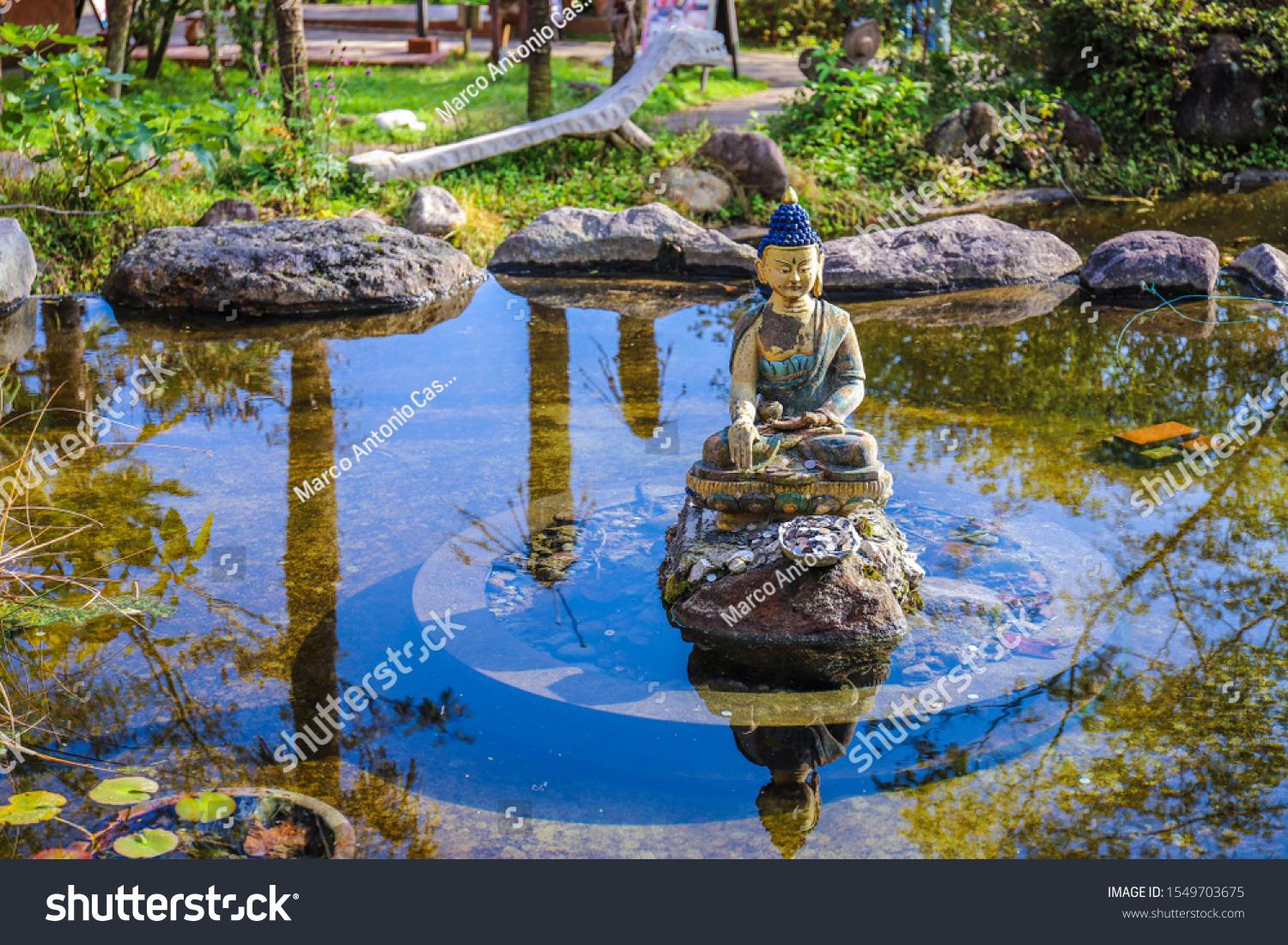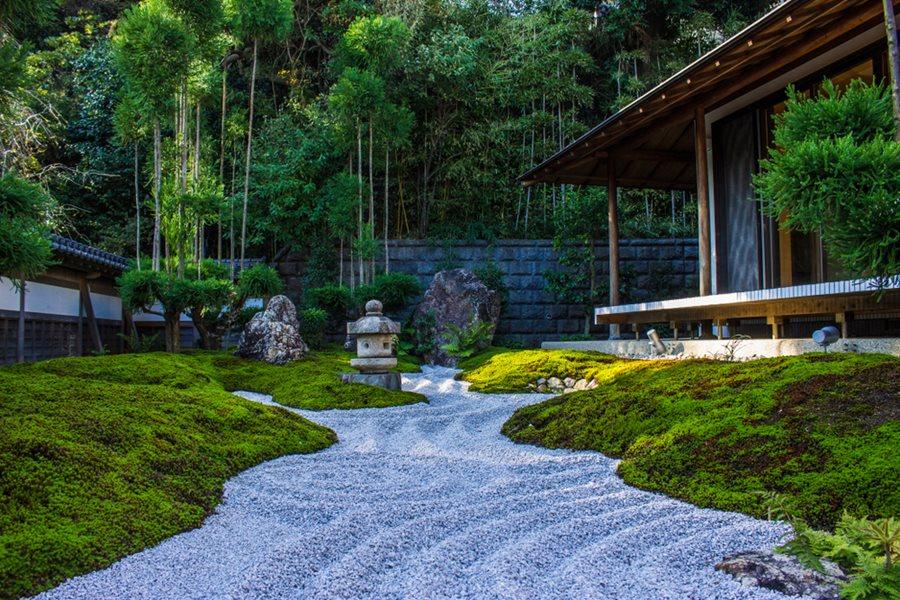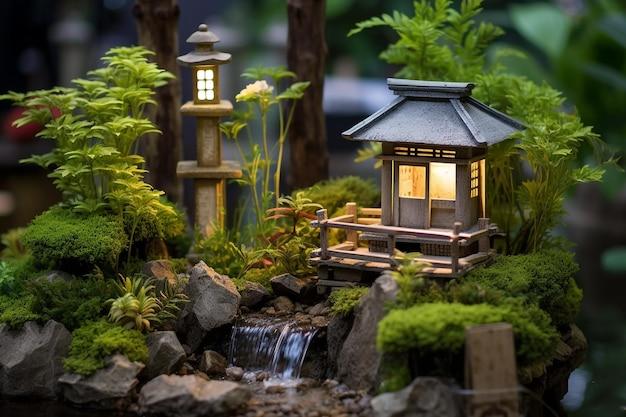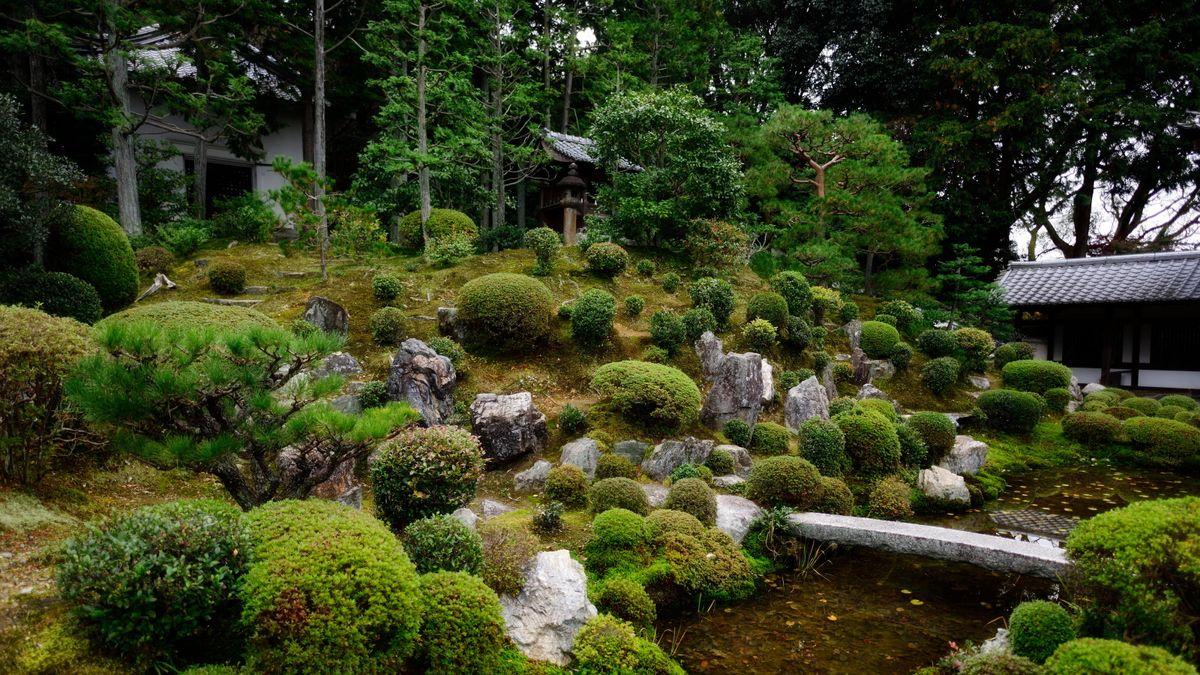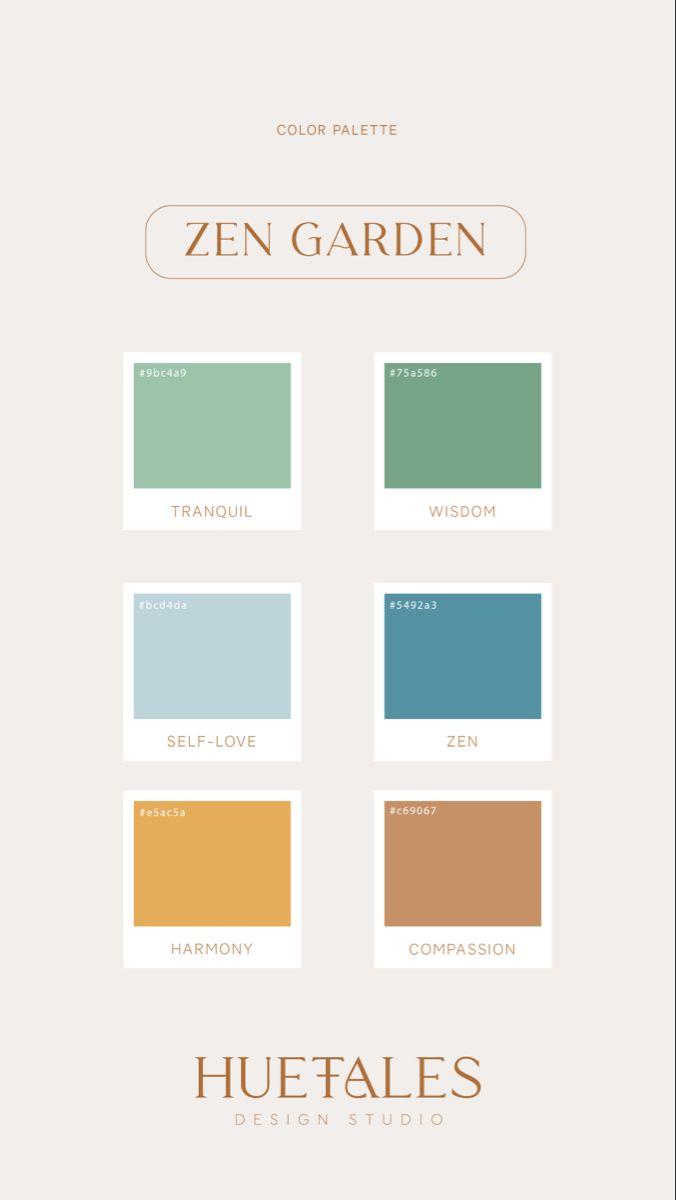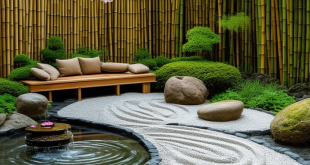Finding Serenity:
In a world bustling with noise and chaos, the quest for tranquility has become more important than ever. Enter the Zen garden—a serene oasis that invites calmness and fosters mindfulness. Whether you’re seeking to cultivate a peaceful outdoor space or simply looking to incorporate a few tranquil elements into your existing garden, this listicle is your guide to creating an ideal retreat for relaxation and reflection.
Explore 24 carefully curated elements, from carefully placed stones to calming water features, each designed to enhance the meditative experience of your space. Discover practical tips and beautiful inspirations that will help you bring balance and harmony into your surroundings. As you journey through these 24 tranquil elements, you’ll learn not only how to design a harmonious garden but also how to nurture your own inner peace along the way. Prepare to transform your environment and embark on a pathway to serenity that holds endless possibilities for contemplation and joy.
Softly raked gravel creates a calming flow in your Zen Garden
A Zen garden thrives on the harmonious interplay of elements, and the soothing texture of softly raked gravel plays a pivotal role in this serene ecosystem. As you step into your garden, the gentle undulations of the gravel guide your gaze and thoughts, creating a calming path for meditation. The meticulous art of raking not only embodies a form of expression but also provides an avenue for mindfulness. Every stroke of the rake transforms the gravel into a canvas of tranquility, where linear designs can represent water ripples, waves, or even the soft brush of wind through the landscape.
Incorporating gravel into your Zen garden not only enhances its aesthetic appeal but also allows for a multisensory experience. The soft crunch of gravel underfoot invites quiet reflection, encouraging visitors to participate in this sacred space. To further elevate the ambience, consider surrounding your gravel patterns with carefully placed elements like pebbles, driftwood, and succulents. Here’s a quick reference to some complementary materials:
| Material | Effect |
|---|---|
| Pea Gravel | Soft texture, promotes relaxation |
| Sand | Versatile for zen patterns, easy to rake |
| River Stones | Adds contrast, grounding effect |
Not only does the raked gravel serve a practical purpose, but it also symbolizes the flow of life and the ever-changing nature of our surroundings. By integrating this element into your Zen garden, you harness the beauty of simplicity and invite a deeper connection with nature. Discover more about creating your tranquil oasis at zen-garden.com.
Carefully placed stones symbolize strength and permanence in your Zen Garden
In a Zen garden, stones serve as the silent sentinels of resilience and longevity, anchoring the garden’s design while inviting meditation and reflection. Carefully selected and positioned, these stones create a sense of stability amidst the ever-changing flow of nature. Whether arranged in a balanced grouping or a solitary placement, each stone tells its own story of endurance. Large boulders represent strength, while smaller pebbles offer a touch of gentleness, forming a perfect harmony that speaks to the duality of life.
When integrating stones into your serene landscape, consider choosing from various types and textures to enhance visual interest. A mix of jagged rocks, smooth river stones, and flat slabs can evoke contrasting feelings of chaos and calmness. Additionally, consider their placement carefully: pathway stones can guide the soul, while decorative stones may serve as focal points for contemplation. Use a simple table to outline some popular stone types and their symbolic meanings:
| Stone Type | Symbolic Meaning |
|---|---|
| Granite | Strength |
| River Stones | Fluidity |
| Slate | Wisdom |
| Basalt | Grounding |
Ultimately, the beauty of a Zen garden is not just in its aesthetics but in the energy imparted through its elements. For those looking to delve deeper into the philosophy behind gardening with stones, resources like The Spruce offer insightful articles that guide you in creating a meaningful space that honors nature’s resilience.
A tranquil water feature invites serenity into your Zen Garden
A water feature serves as a captivating focal point in any Zen garden, harnessing the peaceful properties of flowing water to cultivate a sense of calm. The gentle sound of water trickling over smooth stones can invite you into a contemplative state, allowing you to reflect and connect with nature. Consider incorporating a small pond, a bamboo fountain, or a contemporary water bowl filled with pebbles. Each option offers a unique aesthetic while seamlessly enhancing the soothing atmosphere of your outdoor space.
To complement the water element, strategically place river rocks around the feature, using them to create a natural boundary or as paths leading towards the water. You can also experiment with water plants such as lotus or water lilies, adding a splash of color and creating harmony between land and liquid elements. The reflections and movement in the water will not only beautify your garden but also promote mindfulness. For inspiration on how to design such tranquil spaces, explore resources like Garden Design.
Lush moss adds a touch of life and softness to your Zen Garden
Incorporating lush moss into your Zen garden transforms the landscape into a serene sanctuary. The soft, green carpet of moss acts as a gentle buffer against hardscapes, contributing to an overall sense of tranquility. As it flourishes, moss introduces a living element that is constantly evolving, adding vitality to your garden. With its ability to retain moisture, it promotes moisture-loving plants while also reducing the need for frequent watering. Plus, its texture is a delightful contrast to smooth stones, gravel, and wooden features, enhancing the sensory experience of the garden.
Whether you choose to lay down vibrant patches of feathery cushion moss or velvety sheet moss, each variety brings its own charm and aesthetic. A simple arrangement or a detailed design can create focal points or subtle nuances throughout the space. Consider the following suggestions to incorporate moss effectively in your garden:
- Pathways: Line pathways with moss to soften the journey.
- Rock Crevices: Fill gaps between stones or in rock gardens.
- Beneath Trees: Create a lush carpet at the bases of trees.
- Water Features: Surround ponds or fountains for a natural feel.
To optimize the growth and health of your moss, consider its preferred habitat, light conditions, and moisture levels. Often, moss thrives in shaded areas that mimic its natural forest environment. It requires less maintenance than traditional plants, allowing you to enjoy a peaceful, less labor-intensive gardening experience. For more detailed information on moss and its varieties, check out Moss & Stone Gardens.
Bamboo fencing offers privacy while enhancing your Zen Gardens tranquility
Bamboo fencing serves as a natural barrier that not only ensures privacy but also seamlessly integrates with the serene elements of a Zen garden. Its earthy tones and organic texture complement the greenery surrounding it, creating a harmonious blend. With bamboo’s ability to grow tall and dense, it provides an inviting solitude, allowing one to meditate or reflect without outside interference. This advantageous feature is essential for fostering a true sense of tranquility, transforming your outdoor space into a peaceful retreat.
Moreover, bamboo fencing is an eco-friendly choice, often harvested sustainably, making it a great option for those who prioritize environmental responsibility. The soft rustling of bamboo in the wind adds a gentle soundscape to your surroundings, enhancing the overall ambiance. To maximally benefit from this natural material, consider incorporating artistic elements such as climbing plants or decorative lanterns against the bamboo to further elevate your garden’s aesthetics. The incorporation of soft lighting can turn this tranquil space into an enchanting refuge during twilight hours. Interested in designs and ideas for your bamboo fencing? Check out bamboo.com for inspiration.
Flowing paths invite contemplation and exploration within your Zen Garden
In a Zen garden, the gentle curves and meandering lines of your pathways can serve as a tranquil invitation for both contemplation and exploration. Design pathways that harmoniously connect various elements of your garden, allowing for a seamless flow from one serene spot to another. Stones meticulously placed to form a winding course can symbolize life’s journey, encouraging moments of reflection as one navigates through the space. Use natural materials such as gravel or sand, raked into patterns that mimic rippling water, to enhance the fluidity of your garden, providing both visual delight and tactile pleasure.
To further enhance the contemplative nature of your garden, consider incorporating seating areas along your paths. These spaces can be adorned with comfortable cushions or simple wooden benches, inviting visitors to pause and immerse themselves in the beauty around them. Small alter areas with sculptures or water features can be strategically located at the bends of pathways, creating unexpected moments of intrigue and wonder. Each element can inspire personal interpretation, making the Zen garden not just a visual masterpiece but a profound experience that resonates deep within. For more insights on garden layouts, visit Garden Design.
Meditative sculptures bring a sense of harmony to your Zen Garden
Incorporating meditative sculptures into your Zen garden can elevate its serene ambiance, providing focal points for reflection and mindfulness. These artistic pieces often draw from various cultures, symbolizing tranquility and harmony. Consider adding sculptures crafted from materials like stone, wood, or metal, which not only blend seamlessly with natural elements but also enhance the garden’s aesthetic. Some popular choices include:
- Buddha Statues: Representations of enlightenment, they can serve as a gentle reminder to pursue inner peace.
- Animal Figures: Statues of creatures like turtles or cranes symbolize longevity and wisdom.
- Abstract Shapes: These can inspire contemplation and allow personal interpretation, creating a unique experience.
A well-placed sculpture can anchor your garden’s design while evoking feelings of calm and stillness. Consider using a balance of sizes—large sculptures can serve as statement pieces, surrounded by smaller elements that guide the eye. For an added layer of meaning, you might choose pieces that align with the five elements of nature, like earth, water, fire, metal, and wood. Check out this Garden Design resource for more inspiration on how to choose elements that resonate with your vision. Additionally, arranging stones or natural materials around these sculptures can further enhance their presence and foster a profound sense of connection with the environment.
Minimalistic lanterns provide gentle illumination for evening reflections in your Zen Garden
Minimalistic lanterns serve as an elegant touch, casting a soft glow that enhances the tranquil atmosphere of your Zen garden. Their design often reflects simplicity, allowing them to blend seamlessly with natural elements while providing a meditative ambiance. As day transitions into night, the gentle illumination from these lanterns creates enchanting shadows on gravel paths and surrounding foliage, inviting moments of reflection and serenity. Consider positioning them near water features or stone arrangements to amplify their calming effect, encouraging you to savor the stillness of your space.
When selecting lanterns for your Zen garden, think about materials and style. Here are some popular options that harmonize beautifully with minimalist aesthetics:
- Paper lanterns: Lightweight and ethereal, they enhance a feeling of tranquility.
- Stone lanterns: These add a rustic touch, melding with the garden’s natural textures.
- Metal lanterns: Sleek designs can cast intricate patterns while offering durability.
- Solar-powered lanterns: Eco-friendly and energy-efficient, providing convenience without compromising style.
Using a combination of various materials can create a visually intriguing and harmonious space. To better visualize how these lanterns can enhance your Zen garden, consider the following table for a quick reference:
| Type of Lantern | Key Feature | Ideal Location |
|---|---|---|
| Paper Lanterns | Light and airy | Near water features |
| Stone Lanterns | Rustic charm | Along pathways |
| Metal Lanterns | Modern design | Garden focal points |
| Solar-powered Lanterns | Energy-efficient | Throughout the garden |
Incorporating these elements into your Zen garden will not only provide gentle illumination but will also enrich the overall experience of peace and mindfulness. For more design inspiration, visit Gardenista.
Delicate flowers introduce subtle color and fragrance to your Zen Garden
In a Zen garden, the introduction of delicate flowers adds a layer of tranquility and sophistication, combining both color and fragrance to elevate the sensory experience. When selecting blooms, consider species that embody the principles of simplicity and elegance. Cherry blossoms, with their ephemeral beauty, represent purity and renewal, while lotus flowers symbolize enlightenment and rebirth, making them ideal for creating a serene oasis. Other floral options include jasmine for its intoxicating scent, and lavender, which not only adds a calming aroma but also attracts pollinators, enhancing the ecological balance of your garden.
To maintain harmony and balance, it’s important to choose flowers that bloom at varying times to ensure year-round beauty. Pairing flowers with soft foliage further enhances the aesthetic. Here’s a simple table showcasing some exquisite choices:
| Flower | Color | Blooming Season | Fragrance |
|---|---|---|---|
| Cherry Blossom | Pink/White | Spring | Faintly sweet |
| Lotus | White/Pink | Summer | Light and airy |
| Jasmine | White/Yellow | Summer | Strong and sweet |
| Lavender | Purple | Summer | Soothing and herbal |
When arranging flowers in your garden, group them in clusters to create focal points that draw the eye and encourage meditation. Additionally, think about the impact of gentle fragrance wafting through the air, inviting relaxation and mindfulness. For further inspiration on flower selection, you may explore tips on flower gardening to enrich your Zen sanctuary with subtle colors that resonate with peace.
A Zen Garden bench invites peaceful sitting and contemplation amid nature
Imagine a beautifully crafted bench nestled within your Zen garden, inviting you to take a moment, breathe deeply, and immerse yourself in nature’s serenity. The bench serves as a sanctuary for introspection, a perfect spot to enjoy the gentle rustle of leaves and the soothing sound of water trickling from a nearby fountain. Consider choosing materials that harmonize with your garden’s theme, such as natural wood for a rustic touch or a sleek stone bench for a more modern aesthetic. Enhance the experience by placing the bench amidst fragrant flora or beside a gracefully sculpted rock formation, creating a focal point that draws the eye and calms the mind.
To elevate your contemplative time, accessorize the space around the bench with elements that encourage tranquility. Adding a few potted plants, like bamboo or Japanese maples, can create a peaceful canopy, offering shade and a splash of color. Consider placing small lanterns or solar lights along the pathway leading to the bench, guiding you towards moments of peace as dusk descends. For a personal touch, carve or inscribe a meaningful quote into the bench itself, allowing it to echo your intentions as you pause to reflect. With these enhancements, your seating becomes more than just a bench—it transforms into a cherished retreat for peace and mindfulness. For more garden inspirations, visit Gardeners.com.
Thoughtfully arranged pebbles create a natural mosaic in your Zen Garden
Embracing the art of stone arrangement can transform your Zen garden into a stunning natural mosaic. By carefully selecting smooth, rounded pebbles in various sizes and colors, you can create pathways or focal points that invite meditation and reflection. Position these stones in intricate patterns or random scatterings to mimic the calming rhythms of nature. This thoughtful organization not only pleases the eye but also brings a tactile element to the space, encouraging visitors to connect with the environment through touch and observation.
To elevate the design, consider incorporating contrasting textures with your pebbles. Pairing soft, light-colored stones with dark, coarse gravel can yield a striking visual effect, enhancing the overall ambiance of your garden. You may also explore geometric arrangements that lead the eye through an intentional journey, or opt for more organic layouts echoing natural formations. Here’s a quick reference guide for selecting the right pebbles:
| Type of Pebble | Texture | Suggested Use |
|---|---|---|
| Smooth River Stones | Soft | Pathways |
| Colorful Beach Pebbles | Smooth & Glossy | Focal Points |
| Rough Granite Chunks | Coarse | Edging |
| Flat Slate Rocks | Flat & Even | Seating Areas |
For inspiration and more resources on creating your Zen garden, visit Zen Gardening, where you can find ideas to enhance your outdoor sanctuary.
Stone benches offer rustic charm and restful spots in your Zen Garden
Incorporating stone benches into your Zen garden not only enhances its aesthetic appeal but also invites you to engage with your surroundings in a meaningful way. These benches, crafted from natural stone, embody a sense of permanence and connection to the earth. As you sit upon their cool surfaces, you can feel rooted in the moment, allowing yourself to savor stillness and contemplation. Whether placed under a gentle tree canopy or alongside a meandering pathway, stone benches bring a rustic charm that perfectly complements the serene elements of a Zen garden.
The beauty of these benches lies in their versatility and the way they harmonize with the landscape. You can arrange them to create cozy nooks within your garden, providing restful spots for reading or meditation. Consider enhancing your stone benches with a few thoughtful touches:
- Soft Cushions: Add comfort and a pop of color.
- Surrounding Plants: Choose low-maintenance greenery that offers soft textures.
- Decorative Pebbles: Create a pathway leading to the bench for a striking entrance.
To make the most of these serene seating areas, think about nearby features that will engage your senses even more, such as a trickling water feature or the subtle rustle of bamboo. Elevate your outdoor experience by placing a small side table next to your stone bench, perfect for holding a cup of tea or a beautifully bound journal. To explore various design concepts for garden seating, visit Garden Design for inspiration.
A simple bridge adds elegance and connection across water in your Zen Garden
Incorporating a bridge into your Zen garden can transform a simple landscape into a serene retreat, enhancing its visual allure while fostering a deeper connection with nature. These bridges, often made from materials like wood or stone, serve both functional and aesthetic purposes, allowing you to traverse the garden’s waterscape gracefully. They can be arched or flat, with various designs to suit your garden’s theme. Additionally, materials play a significant role in defining the bridge’s character, from rustic untreated wood for a natural look to smooth stones for a more elegant finish.
As you strategize the placement of your bridge, consider the landscape’s flow and the surrounding elements. Position your bridge to lead the eye over a small pond or stream, enhancing the sense of journey in your garden. Surround it with thoughtful landscaping, such as carefully placed rocks, lush greenery, and delicate flowers, to create a cohesive scene. To elevate the experience even further, install soft lighting beneath or along the edges of the bridge, casting elegant reflections upon the water at twilight. For inspiration on various bridge designs, visit houzz.com to explore stunning visual examples.
Aromatic herbs provide sensory delight and peaceful ambiance for your Zen Garden
Incorporating aromatic herbs into your Zen garden is a simple yet effective way to enhance your sensory experience. The subtle fragrances of plants like lavender, sage, and basil can create an inviting atmosphere that calms the mind and encourages relaxation. Imagine the gentle wafts of rosemary mingling with the soft rustling of leaves, providing a natural therapy that elevates your spirit. Position these herbs around the periphery or intersperse them throughout the garden to create a living tapestry of scent that delights the senses. Their visual appeal, paired with their delightful aroma, makes them not just an afterthought but a critical element of your space.
To enhance the tranquil experience further, consider creating herbal paths with stepping stones surrounded by lush greenery. You can use herbs with varying heights to create layers of texture, allowing visitors to explore and discover new scents at every turn. Here’s a simple table showcasing some popular aromatic herbs ideal for your Zen garden:
| Herb | Aroma | Benefit |
|---|---|---|
| Lavender | Calming and floral | Reduces anxiety and promotes relaxation |
| Mint | Fresh and invigorating | Improves focus and stimulates the senses |
| Sage | Earthy and musky | Purifies and balances mood |
| Thyme | Woodsy and warm | Encourages feelings of security and stability |
Creating a serene environment goes beyond the visual; it encompasses all five senses. With aromatic herbs, you invite calmness, clarity, and a unique sensory delight that connects you to the essence of nature. For more inspiration on suitable herbs and their uses, you can visit Gardeners.com.
Recycled materials give an eco-friendly touch to your Zen Garden design
Incorporating recycled materials into your Zen Garden design not only reduces waste but also adds a unique, eco-friendly flair. For instance, using reclaimed wood to create benches or pathways provides a rustic charm while contributing to sustainability efforts. Old bricks can be repurposed into raised beds or borders, and natural stones found near your locality can serve as perfect decorative elements that blend seamlessly with the garden’s aesthetic. Consider employing glass shards from recycled bottles to create stunning pathways that reflect light, adding an ethereal quality to your serene space.
To further enhance the eco-friendly aspect, materials such as bamboo, old metal mesh, and upcycled containers can be utilized for planters or decorative structures. A visually appealing option is to use broken pottery to create a mosaic that can double as a seating area or a focal point. You might even include a small table made from upcycled pieces of furniture, showcasing your style while promoting sustainability. Explore creative designs that use these materials and inspire your Zen Garden to be both a personal oasis and a testament to your commitment to the environment. For more ideas on eco-friendly materials, visit Architectural Digest.
Seasonal changes inspire new perspectives within your Zen Garden throughout the year
The ever-changing seasons offer a unique opportunity to refresh and transform the ambiance of your Zen garden. In spring, vibrant blooms awaken, inviting a world of color and life. Arrange cherry blossom branches alongside stone lanterns, creating a serene spot to meditate while surrounded by petals. As summer envelops the space in warmth, consider adding tropical plants such as lotus flowers in a small pond, their presence serving as a tranquil focal point. Enhancing the reflective quality of the water can be achieved with carefully placed smooth pebbles, encouraging moments of introspection.
With the arrival of autumn, a cascade of golden leaves carpets the ground, presenting an opportunity to incorporate rich hues by introducing ornamental grasses or strategically placing ceramic frog statues among the foliage. This season invites a sense of gratitude; consider crafting a cozy nook with bamboo mats and a fire pit for evening gatherings, creating warmth and connection. as winter blankets the garden in white, the stark beauty of evergreens becomes essential. The serene outlines can be softened with snow-dusted stones, reflecting the quiet elegance of a Japanese Zen landscape. To explore more about how seasonal elements influence Zen gardens, visit japanesegardening.org.
Soft, ambient sounds from nature enhance the tranquillity of your Zen Garden
Integrating the gentle sounds of nature into your Zen garden not only enhances its visual appeal but also creates a serene auditory landscape. The rustling leaves, trickling water, and distant chirping of birds serve as a natural symphony, fostering a sense of peace and mindfulness. Consider incorporating elements such as a small pond or a water feature to harness the soothing sounds of flowing water, which can be both refreshing and calming. The interplay of these soft sounds can transport you to a tranquil state, allowing for reflection and relaxation as you immerse yourself in the garden’s serenity.
To amplify the experience, you might think about strategically placing wind chimes or bamboo flutes among the trees. These elements can produce gentle melodies with the slightest breeze, further enriching your garden’s ambiance. Additionally, adding plant species known for attracting birds—like cherry blossom trees or flowering shrubs—can invite their natural songs into your space. Below is a simple overview of various sound-enhancing features you might consider for your Zen garden:
| Sound Element | Benefits |
|---|---|
| Water Feature | Creates calming flowing sounds |
| Wind Chimes | Add gentle musical notes with the wind |
| Bird-attracting Plants | Invite natural melodies from local birds |
By thoughtfully considering these elements, you can cultivate a space where the soft whispers of nature complement the visual harmony of your Zen garden. To explore more about how sound influences relaxation, visit mindful.org.
Focal points guide mindful wandering through your carefully curated Zen Garden
In your Zen Garden, focal points serve as inviting invitations to pause and reflect. Start by incorporating stone lanterns that capture the soft glow of evening light. Arrange them along your winding paths to create visual interest and illuminate your garden’s serene spaces. Additional elements to consider include boulders that symbolize strength and permanence, carefully placed to create a sense of balance. A water feature, such as a small pond or a tranquil fountain, offers a delightful auditory and visual focus that can evoke calmness and mindfulness as you wander through your garden. Emphasizing these elements invites you to embrace the present moment and immerse yourself in nature’s tranquility.
Another delightful focal point is a sand or gravel area, meticulously raked into patterns that inspire contemplation. This allows for mindful interaction with your space and offers an opportunity to find peace in simplicity. Incorporating native plants can further enhance your garden’s character, attracting local wildlife while adding layers of texture and color. You might even consider a meditation bench or a cozy seating area positioned to maximize views of your garden’s focal points. By carefully selecting these elements, you can create a harmonious atmosphere conducive to mindfulness, allowing for intentional wandering through your crafted oasis. For further inspiration, explore Japanese Gardening.
Whimsical wind chimes add gentle sounds to your serene Zen Garden
Imagine gently swaying under a tree, soft melodies filling the air as a breeze dances through your garden. Whimsical wind chimes not only enhance the auditory experience of your serene space, but they also contribute an artistic touch. Available in various designs—from delicate glass pieces to rustic bamboo creations—each chime can reflect your personality while providing a sweet symphony of sounds that complement the calming ambiance of your Zen garden. Hang them from branches or along a trellis for an enchanting visual that draws the eye while allowing the sounds to drift throughout your sanctuary.
To elevate your garden’s charm, consider using chimes that incorporate unique elements such as crystals or seashells. These materials can create additional visual interest and harmonize beautifully with the natural surroundings. When selecting wind chimes, it’s ideal to opt for tuned chimes that produce harmonious notes, promoting tranquility and relaxation. Here’s a quick guide to help you choose:
| Chime Type | Material | Sound Quality |
|---|---|---|
| Bamboo Chimes | Bamboo | Soft and mellow |
| Metal Chimes | Aluminum | Bright and clear |
| Glass Chimes | Glass | Sparkling and delicate |
| Mixed Media Chimes | Various | Unique and varied |
Whichever style you choose, these musical installations will not only amplify the beauty of your Zen garden but will also invite a sense of peace, enticing you to pause, breathe, and reflect. For more inspiration on tranquil decor choices, check out Garden Design for resources that can bring your garden dreams to life!
A meditation area creates a dedicated space for reflection in your Zen Garden
Incorporating a meditation area within your Zen garden transforms it into a sanctuary of serenity, offering a dedicated space for self-reflection and mindfulness. This tranquil nook can be adorned with soft cushions, comfortable mats, or a minimalist bench, blending seamlessly with your garden’s aesthetic. Surrounding your meditation space with elements that promote calmness, such as gentle wind chimes, soothing water features, or fragrant plants like lavender, enhances the ambiance and deepens the reflective experience. Consider utilizing natural materials like bamboo or stone to harmonize with the earthy tones of your garden.
Moreover, the layout of your meditation area can significantly influence your state of mind. Position it strategically to take advantage of natural elements and views, creating a vista that inspires peace. You could also introduce simple decor such as a small altar featuring meaningful objects—perhaps stones collected from your travels, candles, or handcrafted symbols that resonate with you. For clarity in maintaining this sacred space, create a schedule for regular upkeep, ensuring it remains a pristine area for daily meditation or occasional retreats. For more insights on meditation spaces, you can visit meditationresources.com.
Subtle pathways encourage slow, deliberate movement through your Zen Garden
Creating gentle pathways within your Zen garden is essential for fostering a sense of calm and mindfulness. Think of winding pebble trails or soft grass paths that draw the eye and invite you to explore. By incorporating elements like smooth stones and the soft rustle of bamboo, these subtle routes can guide your movement, encouraging you to slow down and appreciate the serenity around you. Each step becomes deliberate and thoughtful, allowing you to engage with the environment and yourself, crafting a deep connection with the tranquility that a Zen garden provides.
To enhance the experience, consider adding visual markers along the paths, such as small lanterns or natural sculptures formed from driftwood. These elements not only beautify the space but also serve as focal points, inviting moments of reflection as you wander. Furthermore, the careful arrangement of native plants along the paths can create a sense of enclosure, enveloping you in the tranquility they symbolize. Enhance your experience by using resources like The Spruce for inspiration on creating peaceful garden paths.
Soft lighting highlights features and invites evening tranquility to your Zen Garden
Soft lighting is essential in a Zen garden, as it accentuates natural features while inviting a serene evening ambiance. Consider using warm-toned lanterns or subtle string lights to create pockets of illumination throughout the space. This gentle light not only enhances the beauty of stones, plants, and water features but also encourages relaxation, promoting a harmonious atmosphere perfect for unwinding after a long day. The play of light and shadow offers an enchanting gaze that can turn your garden into a living artwork, evoking a sense of tranquility as you move through the space or simply sit in contemplation.
To optimize the tranquil atmosphere, place lights strategically around key elements of the garden. For instance, consider adding solar-powered tea lights near your water feature, or installing recessed ground lights along the pathways to guide visitors gently through the landscape. Incorporating dimmer switches allows you to adjust brightness levels depending on the mood you wish to cultivate. By maintaining a balance between illumination and darkness, you evoke a sense of peace and intimacy that is essential for a true Zen experience. Explore more about creating peaceful outdoor spaces at gardeners.com.
Textural contrasts between stone and soft plantings enhance your Zen Garden’s depth
In a Zen Garden, the harmony between elements is essential for promoting tranquility and mindfulness. The juxtaposition of smooth, rugged stone and lush, soft plantings creates a captivating dynamic that draws the eye while evoking a sense of peace. Imagine coarse gravel paths nestled beside velvety moss and delicate ferns, where the sharp textures of rocks harmonize with softer foliage. This interplay not only enhances the visual depth of the garden but also invites tactile exploration, engendering a richer sensory experience as one walks through the space.
Incorporating this textural contrast can be achieved in several ways. Consider using boulders and pebbles alongside grasses and flowering plants for a striking visual effect. Here are a few ideas to keep in mind:
- Select a variety of stones: Choose diverse sizes and colors to create layering.
- Incorporate soft groundcovers: Moss, thyme, or creeping sedum soften the look underfoot.
- Vary plant heights: Use taller plants like bamboo alongside low-lying succulents for contrast.
Furthermore, if you integrate tablescapes for features like sand gardens or water elements, the material contrasts become even more pronounced. A simple table to explore the use of elements can offer perspectives on balance:
| Element | Texture | Example Plants/Stones |
|---|---|---|
| Stones | Rough, hard | Boulders, river stones |
| Plantings | Soft, delicate | Moss, ferns |
By carefully considering these contrasts, you can infuse your Zen Garden with a profound sense of balance and peace, turning it into a sanctuary for reflection and contemplation. For more inspiration on garden designs that utilize texture effectively, check out gardendesign.com.
Natural color palettes promote a restful mind within your serene Zen Garden
Transforming your Zen Garden into a sanctuary for the mind can be effortlessly achieved through the use of natural color palettes that embody tranquility and serenity. Consider earthy tones, such as soft beige and warm browns, which can ground the space and promote a sense of stability. Pair these colors with lush greens reminiscent of nature, which evoke rebirth and freshness. Additionally, subtle touches of gentle blues can reflect calm waters, further enhancing the peaceful atmosphere. Flowers and stones play a significant role in this presentation, too; opt for pastel blossoms alongside grey or white stones to create a harmonious balance. This combination fosters clarity and quiet within your garden, allowing the mind to unwind and engage in reflection.
Creating a harmonious visual experience in your Zen Garden doesn’t just rely on colors, but also on the textures and materials you choose. Incorporate natural wood (such as bamboo) for paths or structures, adding warmth through its neutral tone. Consider including smooth pebbles in varying shades—these can create interactive pathways inviting relaxation during walks. Explore grass or moss patches to soften the landscape; their vibrant hues and textural contrasts will stimulate the senses without overwhelming them. For an elegant touch, introduce candle holders made of terracotta or stone that glow softly in the evening, creating an inviting atmosphere. By curating a thoughtful combination of these elements, you’ll cultivate a place that resonates with peace and invites a mindful escape from the chaos of daily life. For more inspiration, explore Gardenia.
In Conclusion
As we draw the curtains on our exploration of “,” we hope you’ve discovered inspiration to cultivate your own serene haven. Each element, whether it’s the soft whisper of gravel underfoot or the soothing presence of carefully placed stones, offers a unique way to foster peace and mindfulness in your life. Remember, a zen garden is more than a collection of beautiful components; it is a reflection of your inner world, a canvas for your thoughts, and a sanctuary for your spirit.
As you embark on this journey of creation, allow your intuition to guide you. Experiment, adjust, and personalize each aspect to align with your vision of tranquility. Take the time to step back and appreciate the beauty that emerges from your efforts, and let each visit to your garden nurture your well-being.
May your zen garden become a cherished retreat where the challenges of the outside world fade away, and stillness takes root. Here’s to your path toward serenity—one peaceful element at a time. Happy gardening!
As an Amazon Associate I earn from qualifying purchases.
 decorafit.com Design ideas for your home and patio
decorafit.com Design ideas for your home and patio

